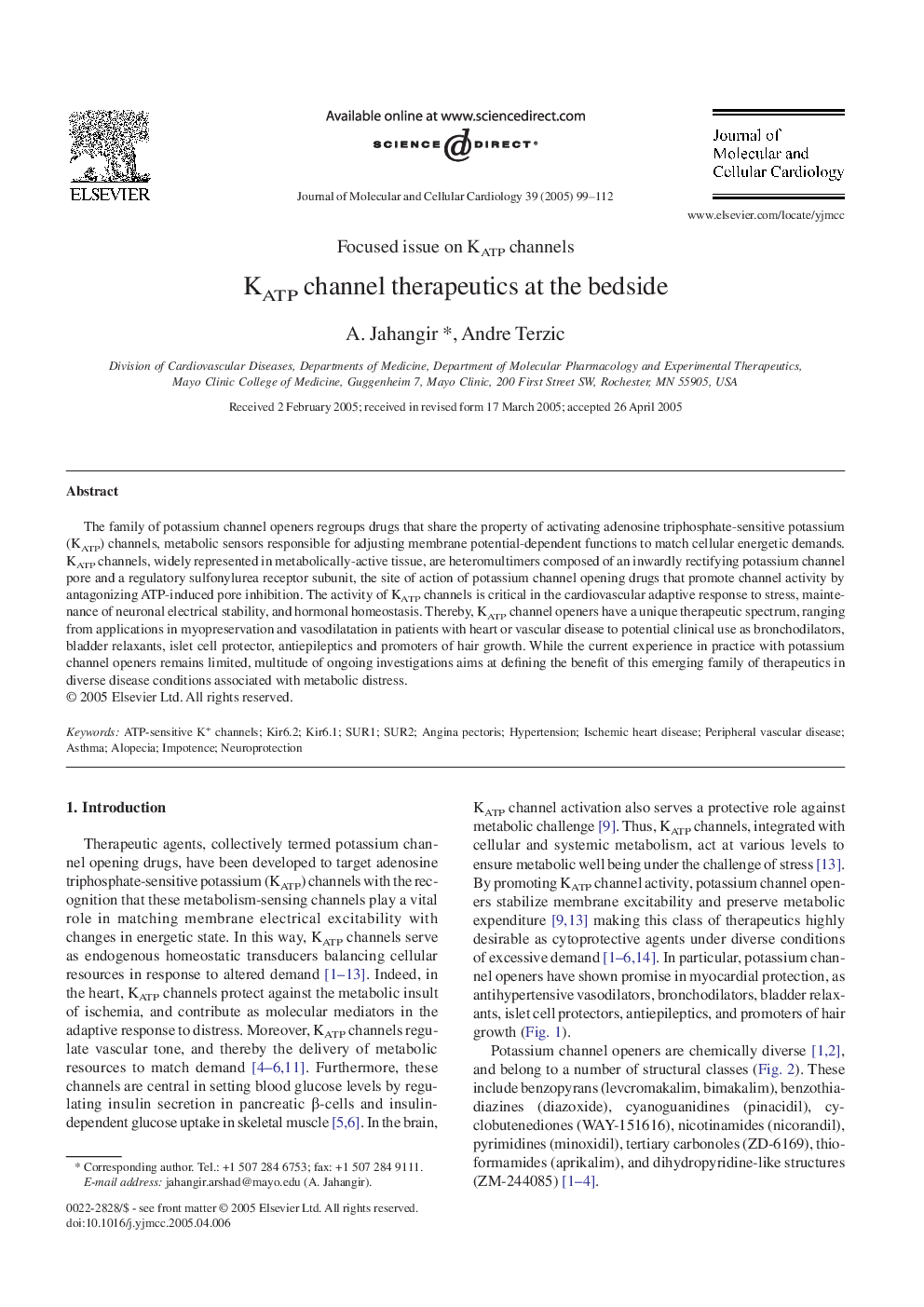| Article ID | Journal | Published Year | Pages | File Type |
|---|---|---|---|---|
| 10954410 | Journal of Molecular and Cellular Cardiology | 2005 | 14 Pages |
Abstract
The family of potassium channel openers regroups drugs that share the property of activating adenosine triphosphate-sensitive potassium (KATP) channels, metabolic sensors responsible for adjusting membrane potential-dependent functions to match cellular energetic demands. KATP channels, widely represented in metabolically-active tissue, are heteromultimers composed of an inwardly rectifying potassium channel pore and a regulatory sulfonylurea receptor subunit, the site of action of potassium channel opening drugs that promote channel activity by antagonizing ATP-induced pore inhibition. The activity of KATP channels is critical in the cardiovascular adaptive response to stress, maintenance of neuronal electrical stability, and hormonal homeostasis. Thereby, KATP channel openers have a unique therapeutic spectrum, ranging from applications in myopreservation and vasodilatation in patients with heart or vascular disease to potential clinical use as bronchodilators, bladder relaxants, islet cell protector, antiepileptics and promoters of hair growth. While the current experience in practice with potassium channel openers remains limited, multitude of ongoing investigations aims at defining the benefit of this emerging family of therapeutics in diverse disease conditions associated with metabolic distress.
Keywords
Related Topics
Life Sciences
Biochemistry, Genetics and Molecular Biology
Cell Biology
Authors
A. Jahangir, Andre Terzic,
